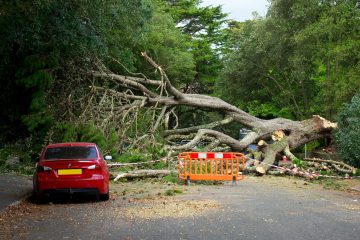Safe Driving Habits
Insurance has everything to do with risk. The safer the driver, the less of a risk. Do you think you are a safe driver?
See how many of the following safe driving habits pertain to you and which habits you can instill into your own driving behavior.
- Defensive Driving. Being a defensive driver is one of the first things that make up a safe driver. Aggressive driving causes accidents, so being cautious at all times is always a good habit to have.
- Wear Your Seatbelt. This should go without saying. Make sure everyone in the vehicle is wearing a seatbelt at all times. There is no excuse to not wear something that can save your life.
- Travel The Appropriate Speed. Do not exceed the speed limit, but also do not drive slow enough to disrupt traffic. Traveling the appropriate speed keeps traffic moving, and is the safest way to drive.
- Keep Your Eyes Moving. Do not just stare at the road ahead of you. Be sure to check your speed, mirrors, along with noting any vehicles that may be in your blind spots.
- Share The Road. Be sure to leave enough space between cars. Do not tailgate. Keep an eye out for motorcycles, bicycles, and pedestrians. You are not the only one on the road.
- Anticipate. Do not assume a green light will stay green. If it has been green for a while, anticipate it changing soon. Never assume another vehicle will do the right thing. Be prepared to be a defensive driver.
- Adjust Your Speed For Conditions. Adjust your speed for unsafe driving conditions. Whether it be snow, fog, heavy rain, etc. be sure to adjust to a safe speed for the conditions. If you do not feel comfortable, do not drive.
- Remove Distractions. Eat before or after you drive. Do not text and drive. Talk on the phone later. Make sure your full attention is on driving.
- Slow Down For Road Workers. Slow down in work zones. Not only are fines higher for speeding, but it is also unsafe for the workers. If traffic allows, move over to give the workers enough space.
- Safe Highway Driving. Before merging, match the speed of traffic and do so safely. Be in the exit lane long before your exit. Do not swerve quickly to exit, continue driving to the next exit and backtrack.
- Maintain Your Vehicle. Schedule regular service inspections of your vehicle to prevent breakdowns. Make sure your brake lights, signal lights, and headlights are all working.
There are countless other safe driving habits not listed here that can be used on the road. Driving safely is not only beneficial to your own safety, but other drivers as well.
Your insurance rates may even be impacted by safe driving. Having no accidents or violations results in less expensive insurance, which is hopefully enough motivation to drive a little safer.
If you do have accidents or violations on your record, maybe use some of these safe driving habits to prevent any future incidents.


